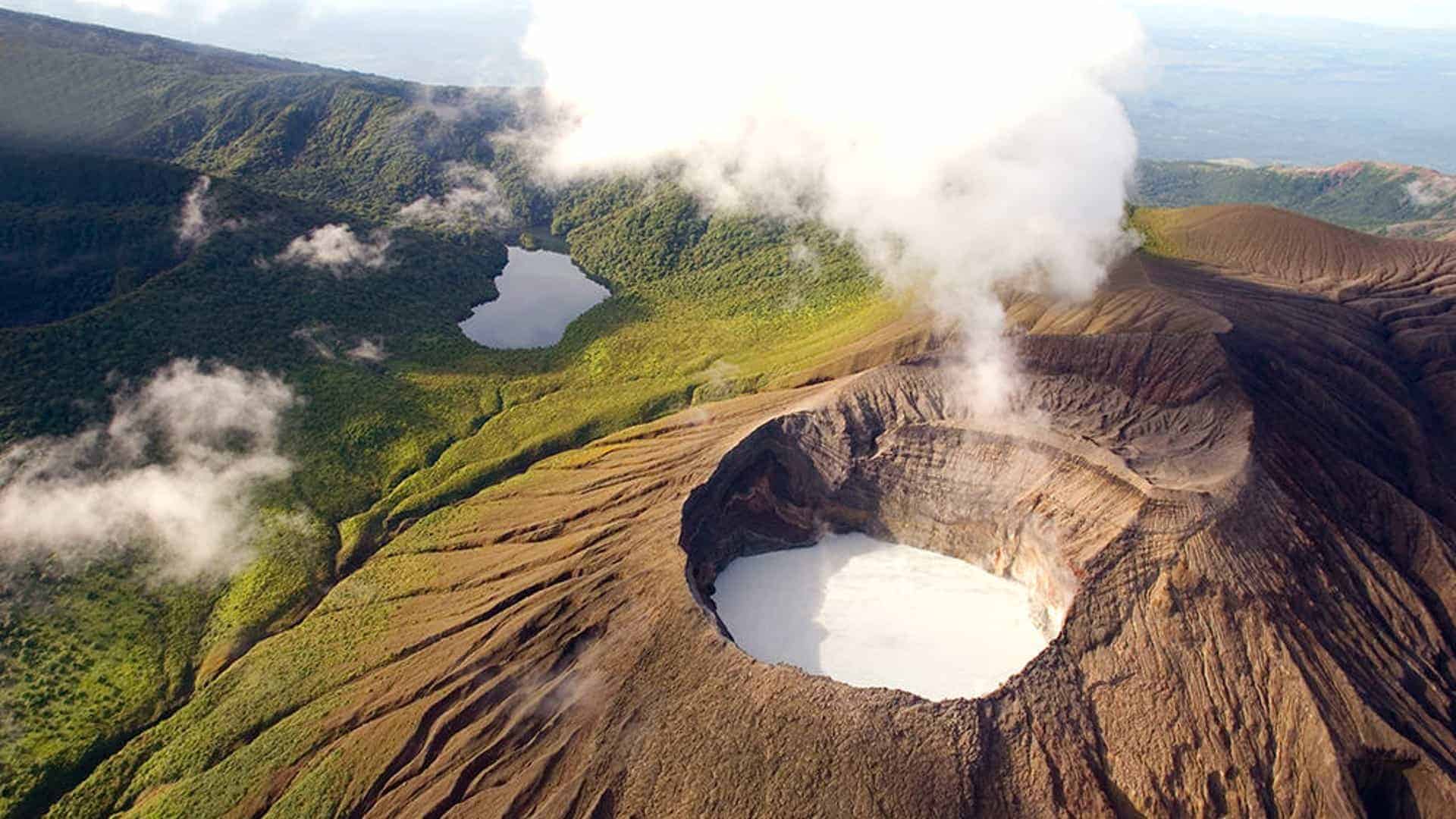Table of contents
A family of four, fresh from the beach in Costa Rica in shorts and T-shirts, spills out of their rental car in Monteverde.
Dad: “It’s cold!”
Mom: “It’s raining!”
Son: “It’s foggy!”
Daughter: “It’s beautiful.”
Even the most avid globetrotters could spend their lives traveling the world and never see a cloud forest. That’s because they represent only some 1% of all forests in the world.
What is a cloud forest? Well, what is a cloud? A cloud is a visible mass of condensed water vapor in the sky.
So what is fog? Fog is a visible mass of condensed water vapor at ground level.
So what are cloud forests? They’re tropical rainforests in the mountains where the clouds are low enough to become fog, and the fog is high enough to become cloud.
And they’re well worth a visit.
Defining ‘cloud forest’
Some facts about cloud forests:
- There are none north of central Mexico — on any continent — according to this map.
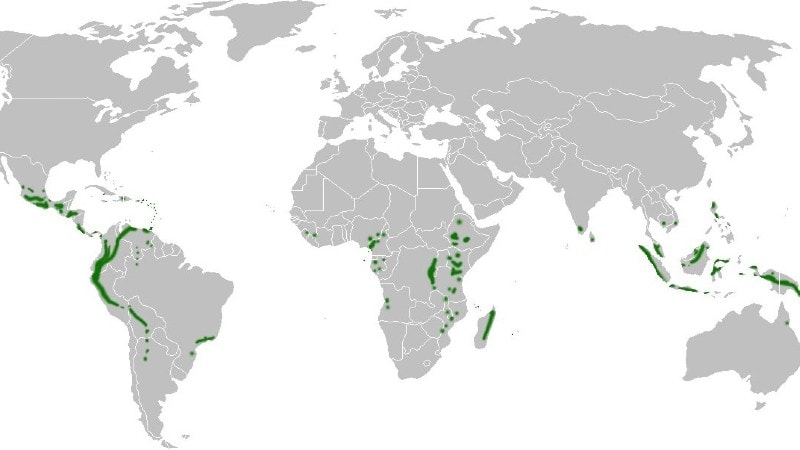
Cloud forests must be tropical or subtropical, meaning they appear between the Tropic of Cancer and the Tropic of Capricorn, or at least pretty close to these imaginary lines.
- They occur between 500 m and 4,000 m above sea level (1,650 to 13,000 feet).
- Annual rainfall ranges from 500 mm to 10,000 mm (20 to 390 inches).
- Average temperatures range from 8° to 20° C (46° to 68° F).
- There is nearly constant fog (if not rain) at ground level, making sunny skies rare.
- Dense, green, moist vegetation is characterized by shorter, gnarled, knobby trees that are usually covered in moss, bromeliads, lichens, ferns, orchids and other epiphytes, or “air plants,” that grow on rooted plants without touching the soil.
The deep, dark forest
Cloud forests resemble the settings for tales by the brothers Grimm, like “Little Red Riding Hood” or “Hansel and Gretel.” The forest is dark and misty, even in the middle of the day, with a preternatural, spooky feel.
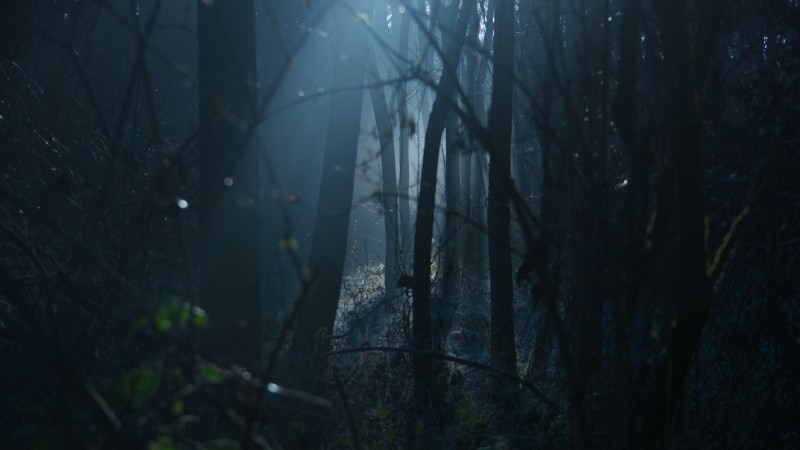
There are no big, bad wolves here, but the biodiversity of these places is off the charts. According to a video posted by Encyclopaedia Britannica, the Monteverde cloud forest alone is home to hundreds of species of birds (some 400+) and more than 750 species of trees, which is as many as occur in the entire United States. And the U.S. has a landmass almost 200 times larger than Costa Rica.
In Costa Rica, one of the most famous residents of the cloud forest is the resplendent quetzal, an omnivorous trogon that was considered divine by ancient Mesoamerican cultures. Males have iridescent green feathers, red breasts and tails longer than their bodies. (The females are not so pretty, but the males seem to like them.) Considered “near threatened,” the elusive quetzal lives only between Mexico and Central America.
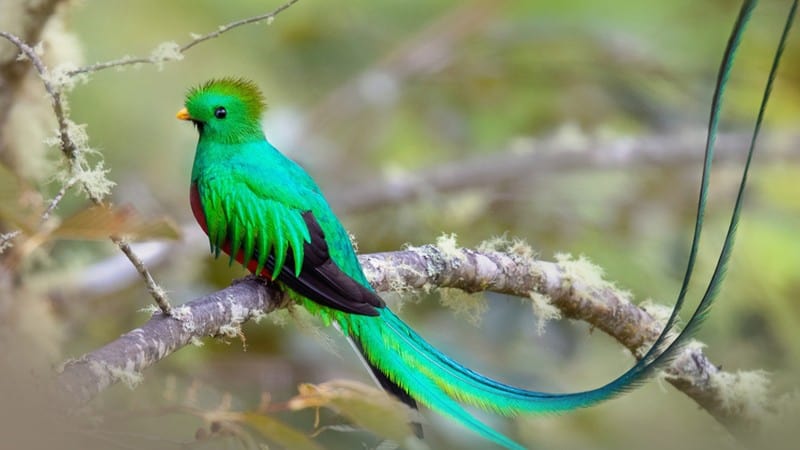
Hummingbirds also like the cold cloud forests. (Random fact: Did you know that hummingbirds can’t walk?) Toucans, toucanets and many other exotic bird species also thrive in this environment.
Subscribe to our newsletter
to stay up to date
There are also said to be more than 100 species of mammals in the Monteverde Cloud Forest Reserve, including jaguars, pumas, ocelots, white-faced and howler monkeys, deer, porcupines and bats. Reptiles and amphibians also like this place, including Costa Rica’s famous little poisonous frogs and roughly 70 types of snakes. Watch your step!
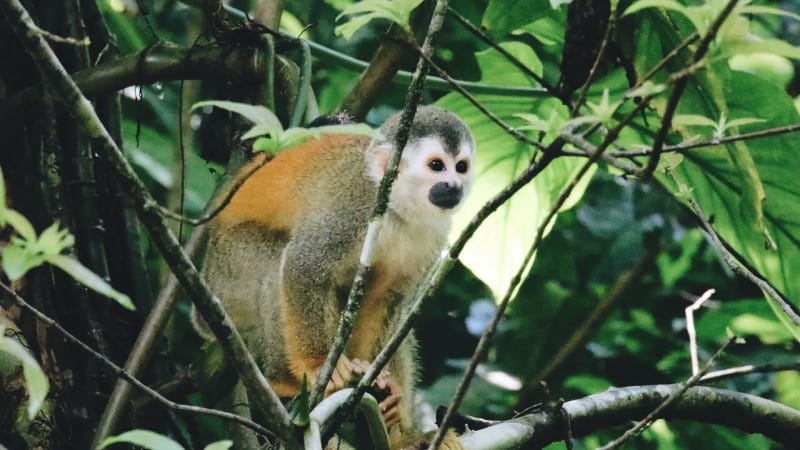
Cloud forests in Costa Rica
Costa Rica’s best-known cloud forest by far is Monteverde, in the central northwest near Arenal. Although there is no national park here, much of the forest is protected in private reserves that are open to the public for hiking and birdwatching tours.
Monteverde is home to the continental divide, where the rain on the eastern side drains into the Caribbean, while on the western side it drains into the Pacific. In these central mountains, hot air from the Caribbean rises and collides with cold air, condensing to create the namesake clouds of this unique forest.
You can drive to Monteverde from Flamingo or Playas del Coco in about three hours, and it’s a beautiful drive with spectacular views. Hiking options abound, and Monteverde is also one of Costa Rica’s top adventure tourism capitals, offering ziplining, bungee jumping, hanging bridges and a host of other thrills.
Lesser-known cloud forests include:
- Los Angeles Cloud Forest Reserve, about halfway between the Central Valley and Monteverde, is a little-known microclimate that most people drive through on their way to somewhere else.
- La Paz Waterfall Gardens, a private eco-park in the central highlands near the capital, has waterfalls, tropical gardens and a wildlife reserve.
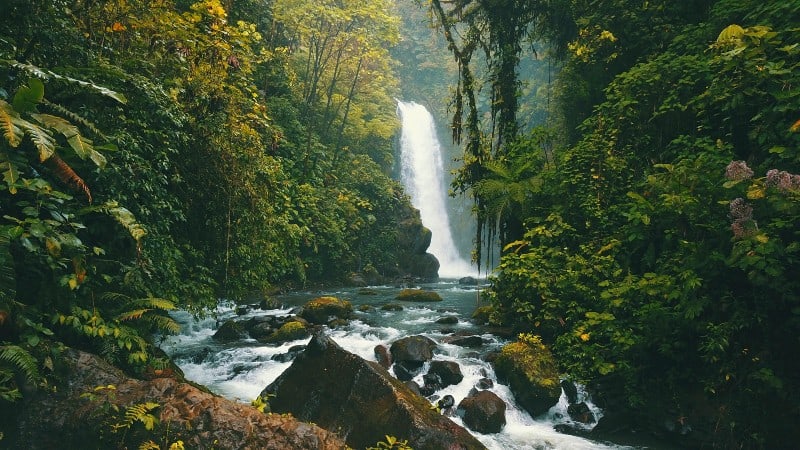
- Bajos del Toro Cloud Forest, also between the Central Valley and Monteverde, is something of a “hidden gem” featuring waterfalls and hiking trails.
- The Santos region south of the capital, so called because many of the towns are named after saints, includes San Gerardo de Dota and other mountainous attractions. Bring warm clothing, huddle around the fireplace, and venture out in the morning with a guide to spot a quetzal.
Your packing list

Dad: “Got shorts, T-shirts, flip-flops, sunscreen?”
Mom: “Check.”
Dad: “Got sweaters and jackets, long pants, hiking boots and heavy socks?”
Son: “I thought we were going to Costa Rica, not the Himalayas.”
Daughter: “I read that Mount Chirripó is almost half as tall as Mount Everest.”
Dad: “You read right.”
Daughter: “Can we climb Chirripó?”
Dad: “Not in flip-flops.”
Welcome to Costa Rica, which is renowned for beaches, but where the astonishing geological diversity includes frigid mountains, tropical tundra, wind-swept volcanoes and hotels with fireplaces and heavy blankets in every room.
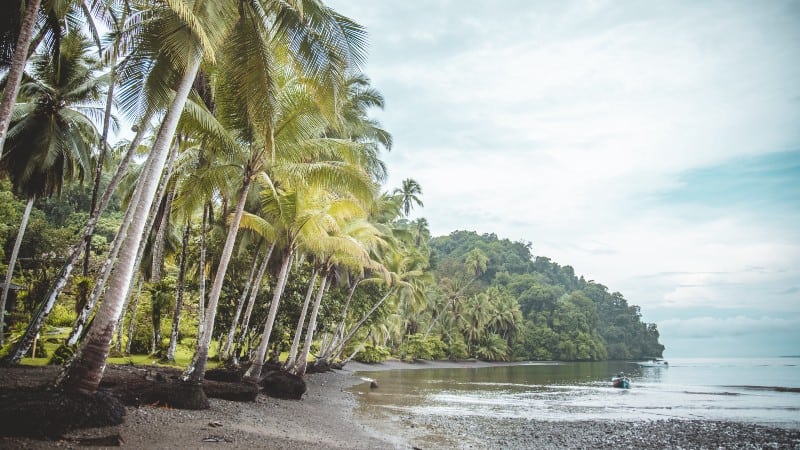
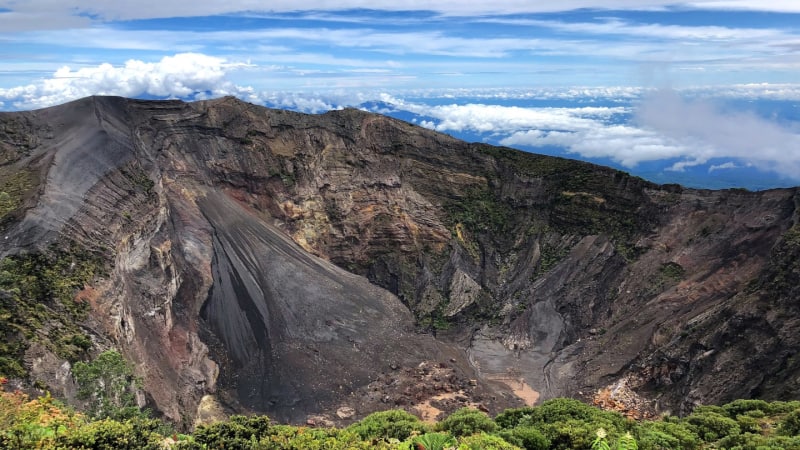
Son: “I forgot my long-sleeve pajamas and my rainbow-colored socks with the individual toes.”
Daughter: “I told you.”
Subscribe to our newsletter
to stay up to date


